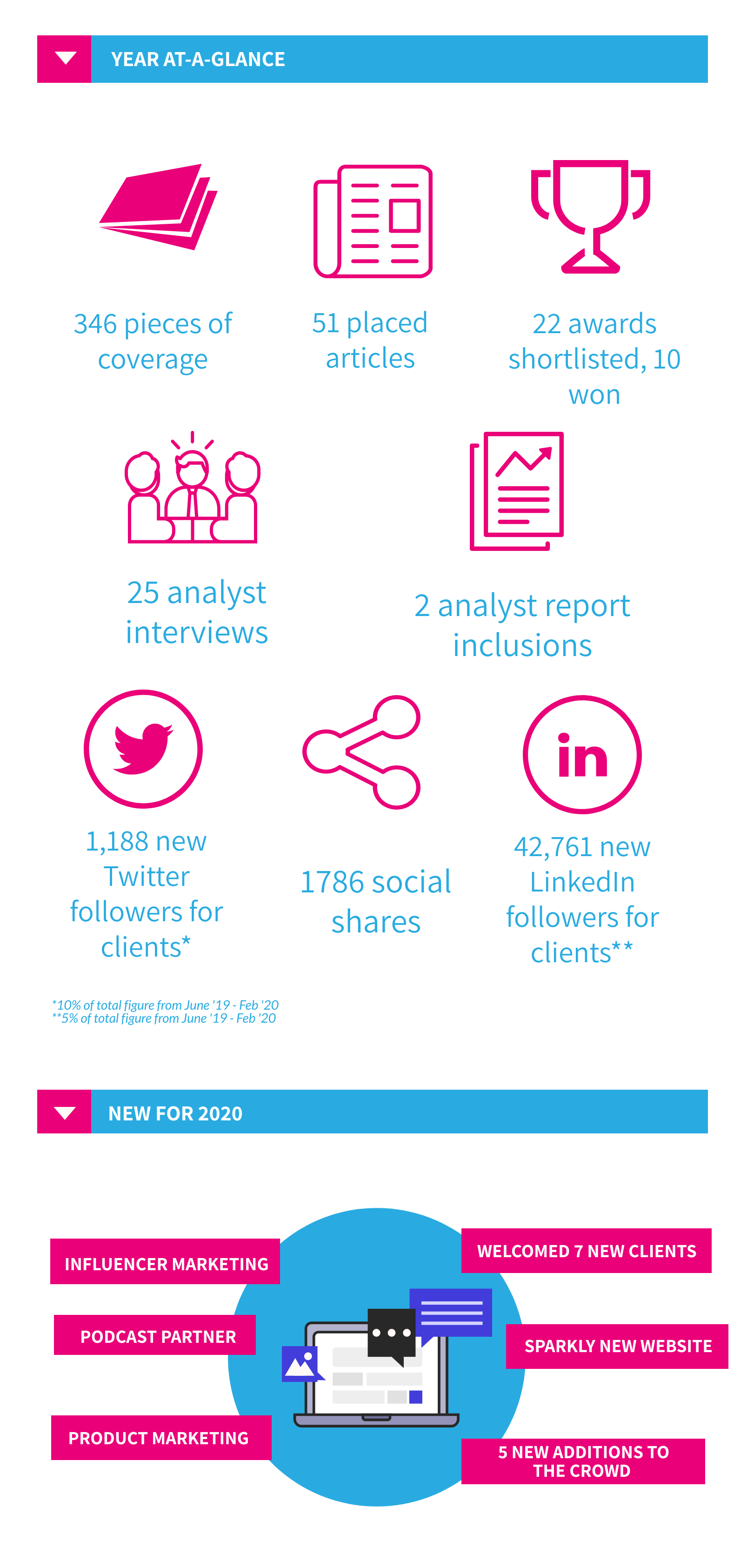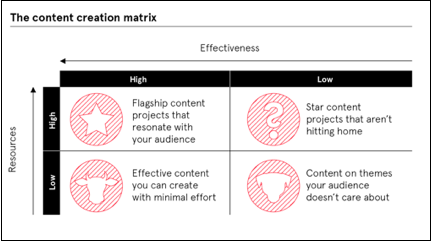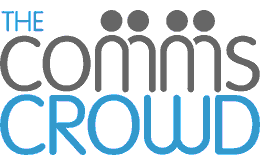Profiling Sam Howard, founder of The Comms Crowd
Asah Adolphe joined us for the month of July 2020 as an intern, and many of the team were involved in giving her some experience of different aspects of our work. Sandra Vogel, head of tech content and working journalist, volunteered to guide Asah through conducting and writing up an interview. This involves several different skills, including researching your subject, working out interview questions that will get you the results you think you need, and crafting an article out of what you learn. Below you can read the result – Asah’s interview with our founder Sam Howard.
It has been eight years since Sam Howard started The Comms Crowd, and it has never been more of a success than it is today. She discloses all in this interview from her favourite procrastination habits to her greatest career achievements and even admits how it was never her initial career plan to work in PR.
Earlier on in Sam’s professional journey she did not consider that PR would be her future career path and even resented the suggestion when her boss recommended it to her. Nevertheless, we can now understand that the software CEO had the right idea as his encouragement led her into the right direction, as she is now the head of a thriving comms agency.
As the creator of a ‘new breed of communications agency’, Sam’s main responsibilities are to ensure that the company is healthy, financially balanced and that that their clients are happy as she emphasises, ‘good enough is never ever good enough.’ Her determined mindset filtrated through every response she made to the questions I asked and accentuated why not only the company but her professional career has been such a triumph.
When asked about the key to developing an efficient team she explained that it is vital that each member is articulate, maintains a technical understanding and exhibits an interest in their role as this all contributes to the smooth sailing of the business. After all, an enthusiastic team builds the foundation for a successful, prosperous organisation.
In any professional field every individual is guaranteed to face hurdles and experience failure, Sam even acknowledged that to fail ‘is how you learn to become better at what you do’ and I could not agree more. When I queried the award-winning writer on the topic of failure, she confessed that she had failed on numerous occasions, which is understandable when you have twenty plus years’ experience in B2B tech PR. She recalled one ‘unpleasant’ experience which happened to be when she was relatively new to the industry and was approached with a new role in the city that she was not prepared for at that point in her career. She expressed it was an honour to be chosen for the job, so she completely ignored the skill level it actually required and ended up ‘leaping in’ and being devastatingly inadequate. Although, she added that headhunting is common in the industry, so it is all too tempting to take a role that you are not yet qualified to do.
It is fair to say that failure can open the door to many successes, Sam’s professional experiences reinforce this as she has accomplished a lot within her time in the industry. However, her greatest achievement she claimed was her having the incentive to start the Comms Crowd. In 2012 traditional work environments made it mandatory for employees to work in offices for long hours, and even getting a 4-day week or working one day a week from home was still frowned upon. Sam decided to go against this model entirely and set up a fully virtual agency with no office at all (and none of the overheads so no extortionate agency rates). Now in the midst of a pandemic, the model is finally recognised as the way to go, but Sam has been making it a success as she has ‘pulled-off’ managing a dynamic, efficient, and professional team that operates from various locations across the country.
The determination and passion that built this tech comms agency stemmed from Sam’s desire to collaborate and work with people she respected. She recognised from early on that it was unfair of the PR industry to have impractical expectations of its mainly female work force, therefore her aim was to embrace these expectations and create a flexible supportive environment, as she stresses that ‘your personal life and your children and your family and your dogs are as important as work and anyone who acts as if they’re not is kidding themselves.’ Clearly, staying true to these values is what stimulates and inspires her drive.
Sam was certainly not reluctant in shedding some light on the challenges she has come across in her career. She revealed, that when working in PR ‘it is vital to learn how to adapt as every client is unique and getting it spot-on with a client can always be tricky’. However, this does not seem to deter Sam and her team from reaching their goal and ultimately impressing their clients. In her view the most rewarding element in her role is witnessing her team blossom and seeing how her team manages to have such a positive impact on their clients.
The Chief Storytelling Officer went on to describe her typical day, and I have to admit it is very productive considering she works from home but it happens to be a routine that she has evolved over the eight years of running The Crowd. Intriguingly she gets to pick her own working hours which begins at 1pm in the afternoon until 7:30pm in the evening and she clarified that between those hours ‘she is in deep concentration.’ However, she promptly starts her day at 8:30am when most people are commuting to work so she can get an early start on her domestic tasks, then she goes outdoors to take her dogs for a walk and after that she would normally get in some exercise, such as Pilates swimming or cycling; as a result of COVID-19 her exercise routine has undergone some changes, unfortunately as we have all experienced this pandemic has affected our lives in many ways. Nevertheless, this has not deterred Sam as her routine remains proactive.
Maintaining a productive and successful work-life along with a satisfying balanced personal life can be stressful, especially when being the executive of a company, but Sam has the perfect yet quirky coping mechanism that helps her which she shares as ‘very calming.’ *Drum roll* it is…creating spreadsheets! Yes! colourful, bright, multicoloured spreadsheets is what relaxes her from a demanding day at work. After all, everyone needs a stress reliever.
I realised prior to conducting this interview that Sam is very ardent and committed in encouraging the next generation of talent. I asked her for any advice she could offer any young person considering a career in the field of PR or the media industry in general. She responded that individuals that wished to undertake a career path into Media and PR must have a ‘strong work ethic’ along with determination and an understanding that the industry is fast paced, she also stated that the person must take into consideration their skills and mindset; as the industry ‘ is competitive and changes like the landscape’. This interview with Sam Howard has been enlightening and informative with a hue of humour. Sam has shared inner and concise mental abilities it takes to be successful in the Media and PR world. She has shown us what it takes to be a part of the industry and the positive yet resilient, tenacious attitude one must have to succeed.
Social media: why employee advocacy is more important than ever

Time to read: 2 minutes
The past few months have forced us all to re-evaluate our lives at home, at work and beyond. We’re spending more time on video calls, sharing more on social media and taking greater advantage of online learning to expand our skills. So it’s no surprise that we’ve seen a big uptick in messages from clients wanting to boost their online presence, not least on social media. Requests vary, but most want to elevate their corporate accounts, especially the number of followers and engagement levels on Twitter and LinkedIn.
Our social media strategist Peter Springett shares his findings from recent audits he’s conducted.
Corporate accounts
- Profile page: most look professional, but solidly corporate. Profile photos and header images are often in line with the overall brand but show little of the ‘softer edge’ you need to stand out on social media.
- Followers: somewhere between 100 and 500 (it tends to be a little higher on LinkedIn).
- Posting frequency: about twice per day (maybe twice a week on LinkedIn).
- Tone of voice/personality: varies, but in many cases this is inconsistent or non-existent.
Personal accounts
During the audit we also look at the personal profiles of the leadership team. That’s when my jaw often hits the ground. A typical CEO has thousands of followers. Thousands! Even when their profile is incomplete. Some even lack a portrait photograph. Impressive? Yes, except that most organisations fail to take advantage of the opportunity. The skill is to turn these passive LinkedIn connections into active networks that promote the business, its offering and the people who make it possible.
With a little more time I usually find at least half-a-dozen employees (at all levels) who are active on social media in a professional capacity. They post and engage regularly, sometimes about their employer, more often about what fascinates them in their industry. Bringing these people into the mix is vital too. By the way, I’m not arguing against having stand-out corporate social media accounts. They matter enormously for the credibility of your business.
The trick is to combine both personal and corporate networks in a virtuous circle that boosts followers, engagement and inbound enquiries.
With one client we assembled and trained an employee advocacy team of 50 people, including the CEO, who were active on LinkedIn and Twitter. Some had thousands of followers, some had hundreds. But with the right training, they became enthusiastic participants, with some even reaching ‘influencer’ status in their industry. At the same time, the number of corporate account followers on Twitter grew from 800 to 7,000 and on LinkedIn from 12,000 to 75,000. The engagement uptick was equally positive. This growth was entirely organic, by the way. We didn’t pay a penny to advertise for followers or sponsor external influencers.
This doesn’t happen overnight.
You need to put a plan and a consistent resource in place to generate momentum on social media. Put it another way: there are no shortcuts, but there is a direct route to social engagement and leads, and we can show you where it lies.
If you’d like to find out more about how we can support your corporate and employee advocacy social media networks, get in touch with me: peter@commscrowd.com or connect with me on LinkedIn.
Thought leadership, it’s a mindset
Time to read: 2 minutes
Where we suggest taking a step back before embarking on a thought leadership comms programme.
So you’ve got news …
 Yes, which PR consultant hasn’t heard this one before: “Our new [insert latest product name here] is the best/biggest/most efficient/etc. …” If it really is: congratulations. You will be able to leave your mark on your industry and be remembered for this innovation. If it isn’t: you will still be able to contribute to the market with a product or service that your customers will appreciate and which will, in all likelihood, enhance and complement your and the market’s existing product offering.
Yes, which PR consultant hasn’t heard this one before: “Our new [insert latest product name here] is the best/biggest/most efficient/etc. …” If it really is: congratulations. You will be able to leave your mark on your industry and be remembered for this innovation. If it isn’t: you will still be able to contribute to the market with a product or service that your customers will appreciate and which will, in all likelihood, enhance and complement your and the market’s existing product offering.
Now the new product is finally ready, you’ll want to give it all the support possible to get sales off the ground quickly. You have done your research and know exactly which products you are competing with and who your target audience is. Now all you need to do is advertise your product and issue a press release. Can it really be that simple? It rarely is.
New technology products and services are being launched every day. Marketing messages promising all kinds of benefits flood your target audience on all channels. How can you make sure that your message is heard and noticed over and above the general chatter? By leveraging your position as an industry expert and thought leader.
Thought leadership is not created overnight. Take some of the most eminent experts in your field of specialism. What are they known for? How long have you been aware of them as industry experts? Where have you heard about them? Do you know them in connection with one specific product? Probably not.
True thought leadership is based on industry expertise, not just product knowledge. You know your market and how your product range fits. You are probably very aware of a number of vertical sectors in which your product is being specified and their particular issues. Take advantage of this knowledge and you take the first step on the road to thought leadership.
It is extremely important to be honest with yourself and your communications team about whether your product is a true first and really unique in the market or not. It will harm your thought leadership standing if advertised as such when it really isn’t. If it isn’t unique, concentrate your messaging on other important features and how it fits with existing technology and improves it.
Take a mental step back from your product and the sales target figures it is supposed to achieve soon after launch. Consider the wider industry and the impact your technology can make on this environment. Perhaps there are solutions in development that will make a difference in a few months or years? Are you aware of the latest relevant scientific research?
Preparing the ground by establishing thought leadership takes time and effort. But, once a reputation is established, it is much easier to maintain it with regular communication and information and will benefit you and your team in the long run.
Analysts, Influencers and The Matrix
Time to read: 3 minutes
Eria Odhuba, Head of AR, goes deep into the influencer mix.
Remember this line from Morpheus: “This is your last chance. After this, there is no turning back. You take the blue pill – the story ends, you wake up in your bed and believe whatever you want to believe. You take the red pill – you stay in Wonderland and I show you how deep the rabbit-hole goes.”
 In the good old days when I started off in the tech industry, we’d just begun to move away from floppy discs, computers booted up really slowly (at least mine did), mobile phones multi-tasked as house bricks, social media didn’t exist, and organisations that wanted to get an idea of what technology to buy read industry analyst reports – sometimes, very long reports. I should know, because I wrote a few of them.
In the good old days when I started off in the tech industry, we’d just begun to move away from floppy discs, computers booted up really slowly (at least mine did), mobile phones multi-tasked as house bricks, social media didn’t exist, and organisations that wanted to get an idea of what technology to buy read industry analyst reports – sometimes, very long reports. I should know, because I wrote a few of them.
The role of analysts as THE primary third-party influencers was clear, and they really played an excellent role guiding organisations through complex decision-making processes regarding IT.
Fast forward to today, and while industry analysts still play a major role, they are not the only party in town. At the end of last year I went to an event at which industry analysts were joined by technology journalists (as expected), management consultants, bloggers, storytellers and academics driving student meet-ups.
All these influencers play a huge role in testing messages, driving conversations and amplifying what is great about a vendor’s technology. And they do this across multiple platforms – check out this blog post by our very own Marc Duke on the science of influencer marketing on how to deal with this complexity.
So how do you drive analyst relations programmes given the different influencers making their mark in the industry?
Well, fundamentally, how you view industry analysts should not change (see my white paper on how organisations can ensure AR delivers to the bottom line). Analysts are not irrelevant or losing their influence (just look at their increasing revenues). It is just that AR programmes need to take account of wider influencer relations activities, and organisations just have to be very clear what they want to get out of their engagements with analysts versus the other types of influencers.
So analysts still produce reports for those that want them, but even they have changed the way they get information out to a wider audiences (i.e. those that don’t have subscription seats). Analysts write their own blogs, interact with other industry bloggers, host webinars (many of them free), and speak at or run their own events. And, as I saw at the event, they pretty much know all the relevant journalists in their research areas and happily have drinks with them.
The crucial thing is that the core messages you deliver to industry analysts should be consistent to other influencers and across all the platforms (sure, you may give analysts some information under NDA). Ultimately the intermingling of various influencer types means it is easier to get caught out if your strategy or messages have holes in them.
Mapping this matrix of influencers, messages and engagement takes time and, more importantly, needs executive sponsorship. Board-level buy-in is necessary to develop the consistency in messaging to all influencers despite the engagement models with each, and it also means more employees are willing to take ownership of contributing to the developments of great relationships with influencers – including industry analysts.
Considerations for balancing AR programmes with wider influencer marketing or PR strategies:
- Focus on the core messages you want to deliver to ALL influencers, but tailor the delivery to match the different types of influencer;
- Point analysts to great work that other influencers may have produced (e.g. academics may have some data that would be useful to analysts as they build a picture of market trends and technology barriers/uptake);
- Identify the analysts relevant to you that use social media:
- read their blog posts and contribute to discussions they have started (sometimes, the exchanges are worth more than a 60 minute briefing);
- follow them on Twitter and comment on their posts etc;
- If you’ve connected with an analyst, make sure you also connect on LinkedIn and follow their posts – opportunities to commend them, comment or refer to others then become possible – just don’t use this as a platform to sell!
- THEN – use the picture you have built of analysts on social media to plan for and engage with them as part of the briefing / consultative process – bring all the various strands together but remain focused on the consistent message you are trying to deliver to them;
- Think about the conversations you have had with industry analysts – how can the information shared be used to drive engagements with other influencers? If you’ve used an analyst for message-testing, get that message out to customers and drive conversations with other influencers so they can amplify or provide feedback from an even wider audience.
Your plan should be to get industry analysts, technology journalists, management consultants, bloggers, storytellers and academics all telling your story – the way you want it.
So, why reference to the movie, The Matrix?
Blue pill = you have a very narrow view of industry analysts – just brief them, see them as people who simply churn out reports or pay expensive subscriptions to access reports which, while valuable, may not be balanced with output from the wider influencer audience.
Red pill = you start to do all the above and realise you are just beginning a journey that will spin faster and faster. This requires a new way of managing the various influencers and measuring the impact each has on sales or market perception, and figuring out how AR can drive engagements with analysts so that the final output is a consistent message that resonates in the market – and across all the influencers.
Which pill do you want to take?
Influencer Marketing – why should you consider peer review sites?
Time to read: 2 minutes
Marc Duke, head of influencer engagement, takes an in-depth look at why even in B2B circles peer review sites matter.
Influencer Marketing, as the name suggests, is about influencing the various people, groups and organisations that are trusted by the buyer or decision maker when making a decision to purchase products or services. One such group are Peer Review websites, where customers leave reviews of recent purchases, and their importance is growing all of the time.
A couple of statistics to back this up:
- Nearly 95% of shoppers read online reviews before making a purchase (Spiegel Research Center, 2017)
- 92% of B2B buyers are more likely to purchase after reading a trusted review (G2 and Heinz Marketing, 2017).
While you may have read a tale or two about fake Amazon reviews and getting friends and family to write about a holiday chalet on TripAdvisor, when it comes to B2B peer review sites things are much more regulated and the process of working with influencer sites is a lot clearer.
To give some context here, peer review sites are most relevant to software providers that are targeting businesses. For example, the adoption of cloud software has increased beyond all recognition in last decade. The Software as Service (or SaaS) market has become mainstream and with it the importance of reading and relying upon peer reviews to inform purchasing decisions has also risen. The reason for this is simple; it’s great to get a free trial of a piece of software but even better if you can read about the experiences (positive and negative) of your peers.
So what peer reviews sites are we actually talking about? Four major sites are:
Before you start to target peer review sites, you need to ask yourself a few questions:
- What categories do they cover?
- Are my competitors listed?
- Are my markets covered?
- Do the sites just generate traffic or also provide leads?
- Do I have the resources to create accurate product and company profiles?
- Do I have the resources to handle negative reviews?
- Does my marketing process enable me to maximise positive reviews/endorsements?
Assuming you can answer all of these questions, you are then in a position to look at working with Peer Review sites. The first thing that needs to be done is create a profile of your company and product/s, which doesn’t cost a penny. Once you have a company and product profile the next step is sourcing customer reviews. If you have happy customers it’s a case of asking them to provide a review of your product in much the same way you would ask a connection to endorse you on LinkedIn. If you don’t have a large bank of customers, you might find that some users will discover your profile.
You also have the option of contacting the account management staff at these sites who will be happy to discuss how to run a reviews programme (how to get reviews on your product page) and ways in which to generate branded collateral with reviews left by your customers to help with your sales process. You will need budget for this, so you have to weigh up the benefits compared to the costs. Just remember that all of these sites want to cover every vendor in the market. so Getting set up will just cost you some time and information so even a start-up should consider peer review sites.
The main benefits of working with peer review sites include:
- Traffic – people can click from the review page to your site or landing page
- Endorsement – some reviewers are happy to be referenced and to be used in customer reference programmes
- Leads – some sites offer ‘click to trial’ so a prospect reading a review can request a demo
- Insight – there is a lot you can learn about your competition.
One thing is for certain – businesses can’t ignore peer review sites as they are increasingly becoming a decision making tool of choice for some customers, and a positive review can help move a prospect from the top of funnel to the bottom. However you look to engage with peer review sites, they are certainly worth considering as part of your marketing strategy.
The ninth year – thought it was tough at the time
Time to read: 1 minute
Sam Howard looks back on the ninth year of The Crowd
So when I first drafted this blog it was along the lines: last 12 months have seen our clients weathering a second year of political faffing, and we saw a fair amount of short-termism and turmoil. But on the upside it did give us the opportunity to assess our strengths and tap into them while developing new services designed to deliver hard returns to the client’s bottom line in such uncertain times. And round about December I was thinking, everything is looking calmer now, we’re in great shape and all set for a steady 2020!
Er yeah about that…
For sure, our remote business model means we are no strangers to the joys of self-isolation and virtual collaboration is not a novely for us but a way of life. But for the industry as a whole, with global travel cancelled and social distancing restrictions wreaking havoc with every family, every community, and every business, let alone the marketing plan… I’m already looking back on those halcyon Brexit days with nothing but a warm nostalgia.
Here’s our year in numbers as more words fail me.

Getting our own house in order
Time to read: 1 minute
Founder Sam Howard reflects on how it’s easy to forget to talk the talk when you’re so busy walking that walk.
 Simply put, our role at The Comms Crowd is to help companies best articulate what they do, how they help their customers, and why they do it better than their competitors. Once we have that position defined, that’s what we roll out in varying engaging formats across the most appropriate comms channels for their target audiences: website, content, PR, social media, etc. We have all built our careers focused on this and only this, so we have become really rather good at it, and as a result we have enjoyed eight years of strong and steady growth.
Simply put, our role at The Comms Crowd is to help companies best articulate what they do, how they help their customers, and why they do it better than their competitors. Once we have that position defined, that’s what we roll out in varying engaging formats across the most appropriate comms channels for their target audiences: website, content, PR, social media, etc. We have all built our careers focused on this and only this, so we have become really rather good at it, and as a result we have enjoyed eight years of strong and steady growth.
But then we made the CLASSIC MISTAKE:
We were so busy looking after our clients we fell behind on our own positioning and comms – fairly embarrassing for a comms agency!
Just like the firms we work with, our strengths have evolved over the years, which means our competitive advantage has shifted, and as a result, the type of clients we work with.
In the early days we sported the start-up vibe of, ‘we are small, agile and affordable’ and of course we were, and still are. However, over time we attracted and retained some of the best independent talent in the industry and developed a deep pool of sector knowledge, as well as a wider skill set. And, as a consequence, we have enjoyed working with a much wider range of companies, so alongside our first loves, the start ups, we find ourselves increasingly working with larger firms too.
Yet our website did not reflect this evolution at all… nor our blog content… nor our social feeds.
Having identified the problem, there have been a few long weeks at the keyboard as we overhauled everything from the ground up. Now, our website and all our social content clearly articulate our core value and how we are best able to help our clients. We have created the space to demonstrate our fintech and tech/cyber experience and our comms expertise, and made sure we have lots of lovely client stories to go with.
So now we are all set! Bring it on 2020, we’re ready for ya!
What Does a Great Blog look like?
Time to read: 3 minutes
So you’re a B2B Tech firm and your marketing team has agreed that a blog is the way forward (and indeed it is). This is the blog you need to read next. Sandra Vogel, who heads up tech content for The Crowd and ghost blogs for a range of firms, passes on her advice.
 So what does a great blog look like? The answer depends on what you want to get out of a blog, so for the sake of argument let’s say you run a business that sells goods or services. There’s a lot of competition for whatever it is you do, and you need to remind people you exist. You use a range of different methods to do this – a blog on your web site is part of the mix.
So what does a great blog look like? The answer depends on what you want to get out of a blog, so for the sake of argument let’s say you run a business that sells goods or services. There’s a lot of competition for whatever it is you do, and you need to remind people you exist. You use a range of different methods to do this – a blog on your web site is part of the mix.
To meet the requirements of your business, your blog needs to keep people coming back. It’s a tool for you to deliver useful information to existing and potential customers or clients. It’s a way of showing off your organisational personality. And it’s a way of helping people understand more about your products, new launches, upgrades, exciting ideas and plans you have for the business.
That’s a lot for a blog to do. Here are some guidelines for better blogging:
- Keep it short. In general try for no more than 600 to 700 words. People will get bored if they have to read more than that, and you might easily stray off the topic at hand.
- Keep it simple. Don’t try to cram all your wisdom into a single blog. Have a point to make, make it, expand a little, maybe give some examples. Develop your point of course, but be careful not to make things too complex.
- Do you need a call to action? I see some blogs that include a call to action every single time. As a reader I know how the blog will end – it’ll be ‘now go and look at our great product’. If that happens every time readers know a blog is a glorified advertisement. They’ll get bored, go away, and maybe never come back. Calls to action are important. But you probably don’t need one in every blog.
- Connect well with the rest of the site. Do you publish white papers, news releases, new product updates? Of course you do. Tie blogs in so that there is continuity, and so you can link to other resources where possible. Don’t leave the blog out on a limb.
- It’s a good idea to have a forward plan so that you don’t get to ‘blog day’ and sit staring at a blank screen wondering what to write. If you work with an agency – and that’s a really sensible idea – then they’ll help with this.
- Be regular. It’s a good idea to have a schedule. Perhaps you want to put a new post online every two weeks. If that’s what you want to do, stick to it. When you make your plan (above), make your schedule too. Both plan and schedule can change in the light of events, but if they’re not in place a blog is the kind of thing that an organisation can let slip if it is busy. A blog that’s not up to date is arguably worse than no blog at all.
- Look from the outside in. Visitors might not use your product or service, might not know your business at all, might just be passing by. Think about it from their point of view. This can be hard to do in-house. It’s another area where an agency can be really helpful.
There’s another guideline that’s overarching on all of the above. It’s about the writing quality. The tone, writing style, grammatical accuracy and readability of your blog speaks volumes – it’s probably more important than the content. Really. You might have the most fantastic point to make, but if the message is garbled, nobody is going to get to the bottom of the screen.
If a blog is going to work for you, you need to put energy, effort and expertise into it. Writing a blog is hard work, and it is a skill people learn and hone through years of experience. Ensuring that the blog plan and schedule are well managed and that topics are spot-on can also be tricky in a busy business. There is no shame in lacking the skills or the time that’s needed in-house. Bringing them in from outside can take your business blog to the next level.
Five tips for Building a Solid Content Marketing Plan
Time to read: 3 minutes
Lauren Bowden, who looks after FinTech Content Marketing here at The Crowd, draws on her in-house experience to outline the foundations of a solid content marketing plan.
 I moved into a content marketing role around six years ago after a decade as a PR practitioner, and while certain aspects of the two disciplines were very similar – story crafting, messaging, creativity, etc. – my eyes were fully opened to the commercial side of the business and how the various parts of an organisation fit together. Earlier this year I was asked to be one of 11 content marketing experts to participate in an eBook on ‘using the content lifecycle to maximise content ROI’. Below is a summary of my contribution, with some additional insight I have gathered recently.
I moved into a content marketing role around six years ago after a decade as a PR practitioner, and while certain aspects of the two disciplines were very similar – story crafting, messaging, creativity, etc. – my eyes were fully opened to the commercial side of the business and how the various parts of an organisation fit together. Earlier this year I was asked to be one of 11 content marketing experts to participate in an eBook on ‘using the content lifecycle to maximise content ROI’. Below is a summary of my contribution, with some additional insight I have gathered recently.
1. Pool your knowledge
The FinTech sales cycle can easily take around 18 months and usually involves a plethora of decision-makers that marketeers need to know all about in order to best target their content marketing campaigns. It requires serious teamwork and buy-in from all key stakeholders, not just the sales team who often are positioned as the only conduit to the client and therefore the main go-to for marketing. Professional services team members have invaluable on-the-ground insight into the daily dealings at client sites, while product management ideally has a macro view of the industry and can point to future trends, so tapping into their knowledge is crucial when devising a content marketing plan.
2. Do your research
It is rare that only one product or solution will need to be pushed to the market through the course of the year and so content marketing plans should be drawn up for each area of focus. Some plans will be more detailed than others to reflect the organisation’s priorities, but at the very least they should cover information on market drivers, solution description, key messages, target market, buyers’ journey mapping, key competitors, challenges, localisation plans and a content calendar. This will take time but always pays dividends when it comes to managing workloads and budget effectively, and ultimately measuring effectiveness over the year.
3. Plan well – but leave some room to wiggle
Budgeting requires you to have a clear idea of the goals you need to achieve in each campaign—goals that have been communicated to and accepted by stakeholders. This does not mean planning and budgeting for every detail of every content piece with no wiggle room over the year. Even the most robust plan and organised team will have unexpected opportunities that are too good to pass up over the year. That’s why it’s always important to have at least a 10 percent contingency built into the budget.
Another benefit of a strong content plan is that it helps you manage supplier costs. With a well-thought-out plan, many items can be budgeted for upfront, suppliers notified in advance about what work you have planned over the year, and packages negotiated accordingly, giving you a bigger bang for your buck.
It is also crucial to keep up to date with your existing suppliers’ new offerings, and to explore the marketplace for other suppliers who can help you execute new tactics. This kind of market scanning is particularly important for in-house marketing teams so they can keep abreast of the latest techniques and methods.
4. Embrace the data
Making sure you’re hitting the right audiences with your content can be a challenge, especially when you are targeting multiple stakeholders who make decisions as a group. When you look back on this kind of win, it’s difficult to pinpoint the influence specific content pieces had on that sale. You’re not going to turn around to a salesperson after an 18-month-long sales process and tell her the real reason she got that deal was because of a video or white paper – unless you want to be laughed out of the sales meeting.
Marketing Technology (aka MarTech) can be your best friend here. Whether it’s CRM, marketing automation or content management systems, they can be crucial in making sure content is getting into the hands of key audiences. For example, you can build up a picture of what is happened during a sales cycle with CRM data. Retrospective analyses can reveal how many people in an organisation engaged with which content pieces. When it turns out that 12 different people from the same firm have all clicked on multiple pieces of content, or if the person clicked on multiple pieces of content, you have a much stronger case to prove your campaign’s effectiveness.
If the content is not hitting the mark – messages are either not reaching their targets or they are simply not resonating – it’s essential that tweaks are made on the fly. This shouldn’t happen too much with campaigns that are well thought out at the planning stage. However, sometimes you must adjust, try different things and then stay in constant communication with campaign stakeholders to ensure you remain on the right path.
5. Stay curious
Another useful tool to help you dive deeper into campaign effectiveness was shared by Raconteur Media recently. They applied the well-known BCG Matrix to the business of content creation:

Figure 1 Content Creation Matrix from Raconteur Media
The general guidance with this is that you milk the cows to feed the stars. That is, dedicate around 70 per cent of your resources to creating more of your best performing content types, positioning them prominently in the customer journey and optimising the process as much as possible.
Set aside the remaining 30 percent of resource budget for experimentation. Depending on your appetite for risk, you might split this allocation further between moderate‐ and high‐risk activities.
At The Comms Crowd we can not only help you create winning content pieces but can also work with you to plot those pieces along your customer journeys and find out the best way to resonate with the right decision-makers at the right time. Email us to find out more.
Influencer Marketing in B2B – Covering all your bases
Time to read: 2 minutes
Marc Duke explains the science of influencer marketing:
 I am a sports fan, so any sporting metaphor works for me. When I thought about Influencer Marketing this classic baseball reference sums it up and here’s why:
I am a sports fan, so any sporting metaphor works for me. When I thought about Influencer Marketing this classic baseball reference sums it up and here’s why:
Influencer marketing is about making sure the people who influence your target customer know about your offering. The idea of covering all your bases means you have ‘influenced’ all those stakeholders who influence the purchasing decision, and can endorse or advise in favour of your company over the competition. When you communicate directly with your customer or prospect, you are then pushing on an open door as they have already been positively influenced and are already open to dialogue.
Which bases do we cover?
1) Identifying your influencers
So that’s the theory, but who are the people influencing your customers? Much will depend on whether your business sells direct to the customer or through the channel. Either way, the first job is to map out a set of discrete groups that influence the purchasing decision. Let’s take the example of a company that produces environmentally-friendly and energy-efficient office lighting.
Influencers that make the cut will include:
- Journalists – who write about office environments.
- Industry analysts/consultants – who write about the market and provide ‘behind closed doors’ advice to decision makers
- Academics – who teach about ergonomics and design and need to be aware of the latest trends
- Industry associations – who represent the trade and bring together people who work in in the industry
- Industry gurus – who blog, write and speak about the latest trends
- Existing customers – who use the product/service and can endorse its use
- Competition – who’d rather your target customer used their solution!
- Partners – who you work with to your mutual benefit
- Investors – who have invested in your business
- Charities – supporting greener initiatives
I could go on but by now you should have noticed a couple of things. Firstly, this is a long list (one client I worked with identified SIXTEEN separate influencer groups) and secondly, other parts of your marketing activity already address some of these groups e.g. journalists will be handled by PR and industry analysts will be looked after by the Analyst Relations team.
2) Scoring your influencers
For this example let’s just focus our influencer efforts on the industry gurus. How do we identify them and how do we work out the weight of their influence? Not as simple as you might think, and there is a need for some smart metrics that can evaluate the following:
- Reach – how big a following does this guru have on twitter, LinkedIn, Instagram etc? Does this person have blogs or articles in local publications or globally?
- Relevance – how engaged is this influencer socially e.g. how popular is the content that this person has shared?
- Expertise – from their public activity how is this influencer perceived? For example, have you noticed that they are giving keynotes at major industry events?
Each influencer will need a numeric score from 1 – 10 for each category. Ultimately, we will come up with a final influence score. The idea here is that there must be some measure of influence, even if arbitrary, that enables us to track and decide who indeed is an influencer of our target customer base.
3) Engaging your influencers
Assuming we have done our homework, we will probably have anything between 20 to 50 gurus that we have scored and ranked. But how will we work with them? This is where you need to be totally clear that working with an influencer is about education – NOT selling. It’s about informing – NOT persuading and it’s also about recognising that this influencer is rightly lauded because they might have a better understanding of the market than you, they have more experience than you or they just might be really, really smart!
The sorts of questions you need to think about:
- Is there information you can share that they will value and find of interest such as a white paper on an issue they care about?
- Are there things they can actually help with e.g. taking part in a podcast, speaking at one of your events?
- Do you have people in your company credible enough to establish and maintain proper relationships with your halloed influencers rather than just sell at them?
If you have big ticks to all the above then you are ready to go out there and influence those influencers.




